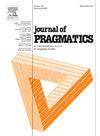韩国和中国职场观察真人秀的批评
IF 1.7
1区 文学
0 LANGUAGE & LINGUISTICS
引用次数: 0
摘要
本研究考察了韩文和中文的批评。这一研究具有重要意义,因为批评具有潜在的威胁性,并可能在跨文化交际中造成误解,而且对韩语和汉语使用者的对比语用分析有限。数据来源于《好人》和《令人兴奋的工作机会》,这是两部职场观察真人秀,讲述了法学院学生在一家知名律师事务所争夺两个职位的故事。这两部电视剧在题材、形式、主题、制作背景等方面都具有可比性。数据由两名项目助理独立转录和编码。运用互动社会语言学的方法分析批评是如何在社会互动中创造意义的。R还被用于统计检验,以探索语言和批评之间的潜在关联,并确定一类批评的比例是否明显大于另一类批评的比例。结果表明,参与者采用了各种批评策略,如表达消极态度、陈述问题、比较、建议、质疑、戏弄等。与韩国人相比,中国人直接或间接地使用了更多的批评实例。在律师-实习生互动中,批评比在观察者-观察者、律师-律师或实习生-实习生互动中表达得更频繁,这表明职业角色和地位差异对批评使用的影响。这一发现挑战了认为东亚文化之间普遍相似的刻板印象,包括韩国人和中国人在语用语境中的行为相似的观念。需要对这些未开发的领域进行进一步研究,以防止韩国人和中国人之间的误解。本文章由计算机程序翻译,如有差异,请以英文原文为准。
Criticism in Korean and Chinese workplace observation reality shows
This study examines criticism in Korean and Chinese. It holds significance because criticism is potentially face-threatening and can cause misunderstandings in intercultural communication, and there has been limited contrastive pragmatic analysis between Korean and Chinese speakers. Data derived from Good People and An Exciting Offer, two workplace observation reality shows where law school students vied for two positions at a renowned law firm. The two shows are comparable in genre, format, theme, and production background. The data is transcribed and coded independently by two project assistants. Interactional sociolinguistic methods are employed to analyze how criticism is used to create meaning in social interaction. R is also utilized for statistical tests to explore potential associations between language and criticism, and to determine whether the proportion of one category of criticism is significantly larger than that of another. Results indicate that the participants adopted various criticism strategies such as expressing negative attitudes, stating problems, making comparisons, advising, questioning, teasing, among others. The Chinese speakers employed significantly more instances of criticism—both directly and indirectly—than their Korean counterparts. Criticism was conveyed more frequently in the attorney-intern interactions than in the observer-observer, attorney-attorney, or intern-intern interactions, which indicates the influence of professional roles and status differences on the use of criticism. The findings challenge the stereotype that suggests a generalized similarity between East Asian cultures, including the notion that Korean and Chinese speakers behave similarly in pragmatic contexts. Further research in these under-explored areas is needed to prevent miscommunication between South Koreans and Chinese nationals.
求助全文
通过发布文献求助,成功后即可免费获取论文全文。
去求助
来源期刊

Journal of Pragmatics
Multiple-
CiteScore
3.90
自引率
18.80%
发文量
219
期刊介绍:
Since 1977, the Journal of Pragmatics has provided a forum for bringing together a wide range of research in pragmatics, including cognitive pragmatics, corpus pragmatics, experimental pragmatics, historical pragmatics, interpersonal pragmatics, multimodal pragmatics, sociopragmatics, theoretical pragmatics and related fields. Our aim is to publish innovative pragmatic scholarship from all perspectives, which contributes to theories of how speakers produce and interpret language in different contexts drawing on attested data from a wide range of languages/cultures in different parts of the world. The Journal of Pragmatics also encourages work that uses attested language data to explore the relationship between pragmatics and neighbouring research areas such as semantics, discourse analysis, conversation analysis and ethnomethodology, interactional linguistics, sociolinguistics, linguistic anthropology, media studies, psychology, sociology, and the philosophy of language. Alongside full-length articles, discussion notes and book reviews, the journal welcomes proposals for high quality special issues in all areas of pragmatics which make a significant contribution to a topical or developing area at the cutting-edge of research.
 求助内容:
求助内容: 应助结果提醒方式:
应助结果提醒方式:


